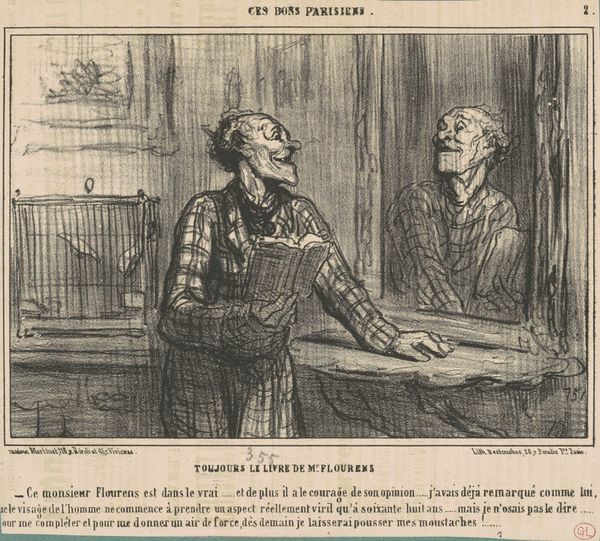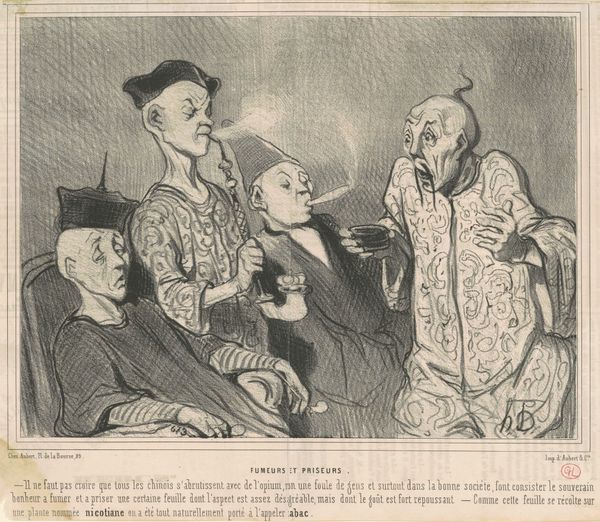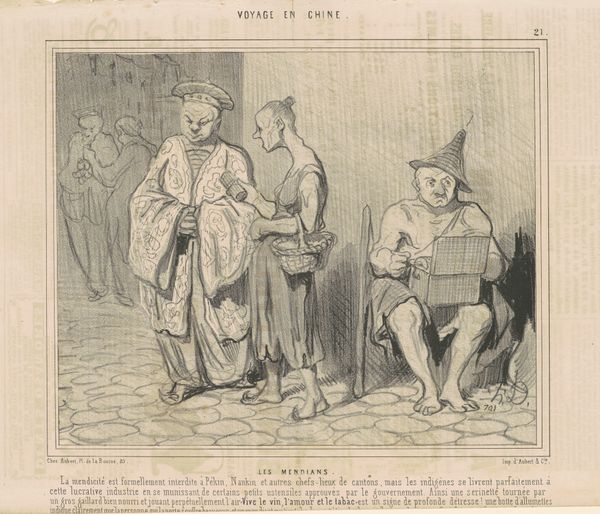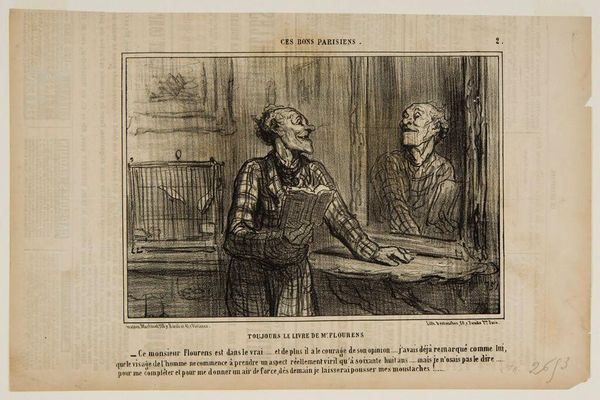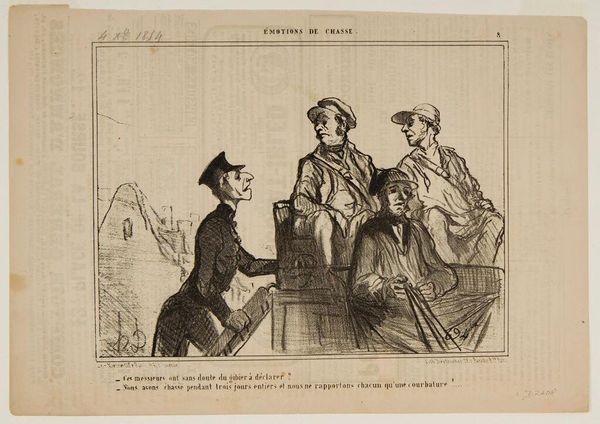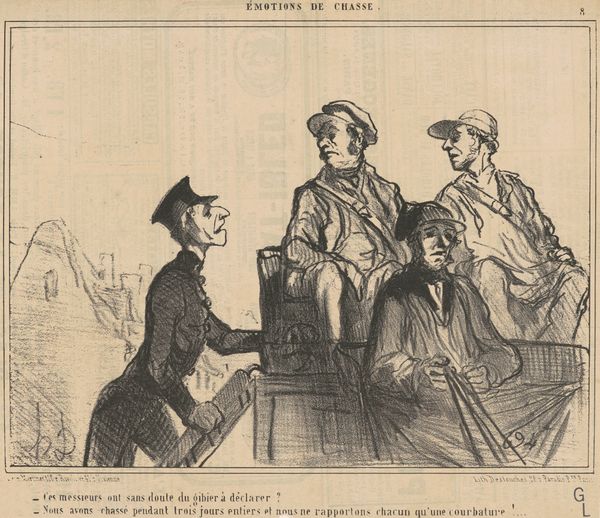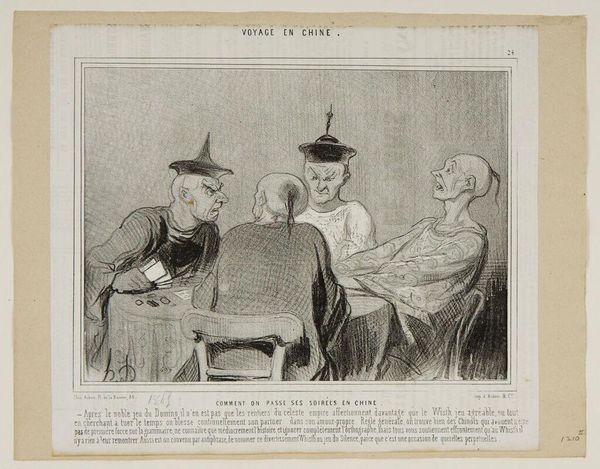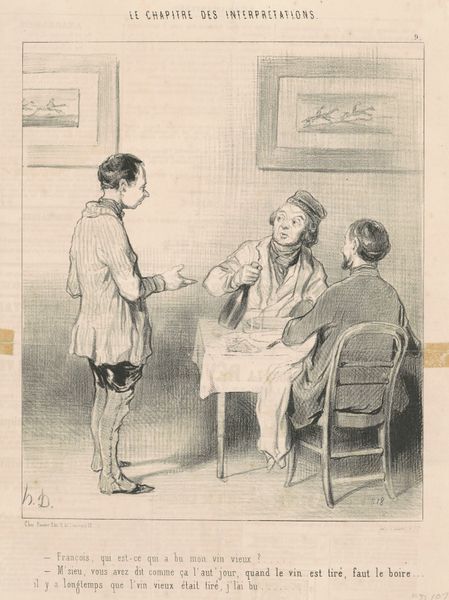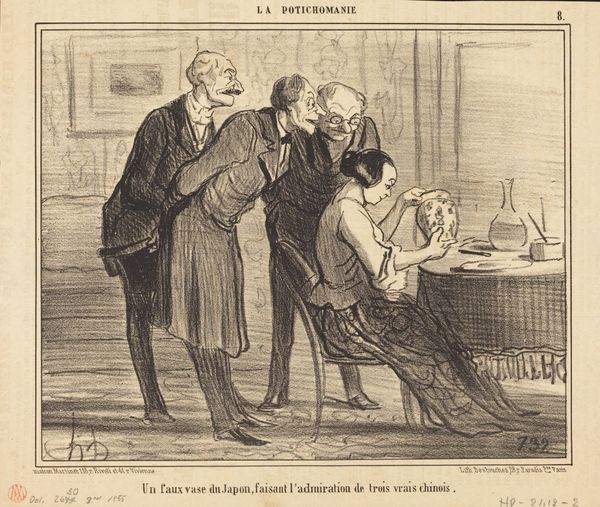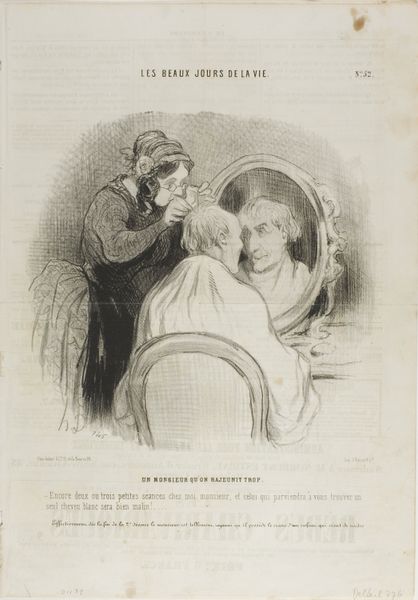
Copyright: National Gallery of Art: CC0 1.0
Editor: So this is "Comment on passe ses soirées en chine" by Honoré Daumier, circa the 19th century. It's a lithograph, and the scene is just filled with so much tension. The figures are almost grotesque. What's your take on this? Curator: From a materialist perspective, look at the printmaking process. Daumier's lithographs were mass-produced. These images served a vital role in disseminating social and political commentary to a wider audience, impacting how people understood class structures. How do you think the reproduction impacts its message? Editor: Well, if it’s widely available, the caricature and commentary are reaching a much larger group, potentially sparking debate or reinforcing existing prejudices. I suppose this also changes our modern understanding of "originality" and value. Curator: Exactly! It also tells us about consumption. This image wasn't necessarily high art but a product designed to be consumed as commentary. The title translates to “How they spend their evenings in China,” it begs the question: What's the "product" being consumed by these characters? Is it leisure? Is it class performance? Is it exploitation? Editor: I hadn’t considered "product" on a non-material level, it changes how I understand the composition. The focus is on a sort of ritual, which comments on a broader socio-political practice. I guess I initially took the lithograph as a commentary on cultural difference. Curator: It's a loaded image! And you’ve touched on an important point about orientalism. But consider Daumier’s choice of medium: a readily available print underscores a capitalist system. Daumier is depicting more than just leisure in China. Editor: That makes the caricature of leisure far more complicated. It's a criticism of labor, exploitation and the art market itself! Thanks, that was insightful.
Comments
No comments
Be the first to comment and join the conversation on the ultimate creative platform.
